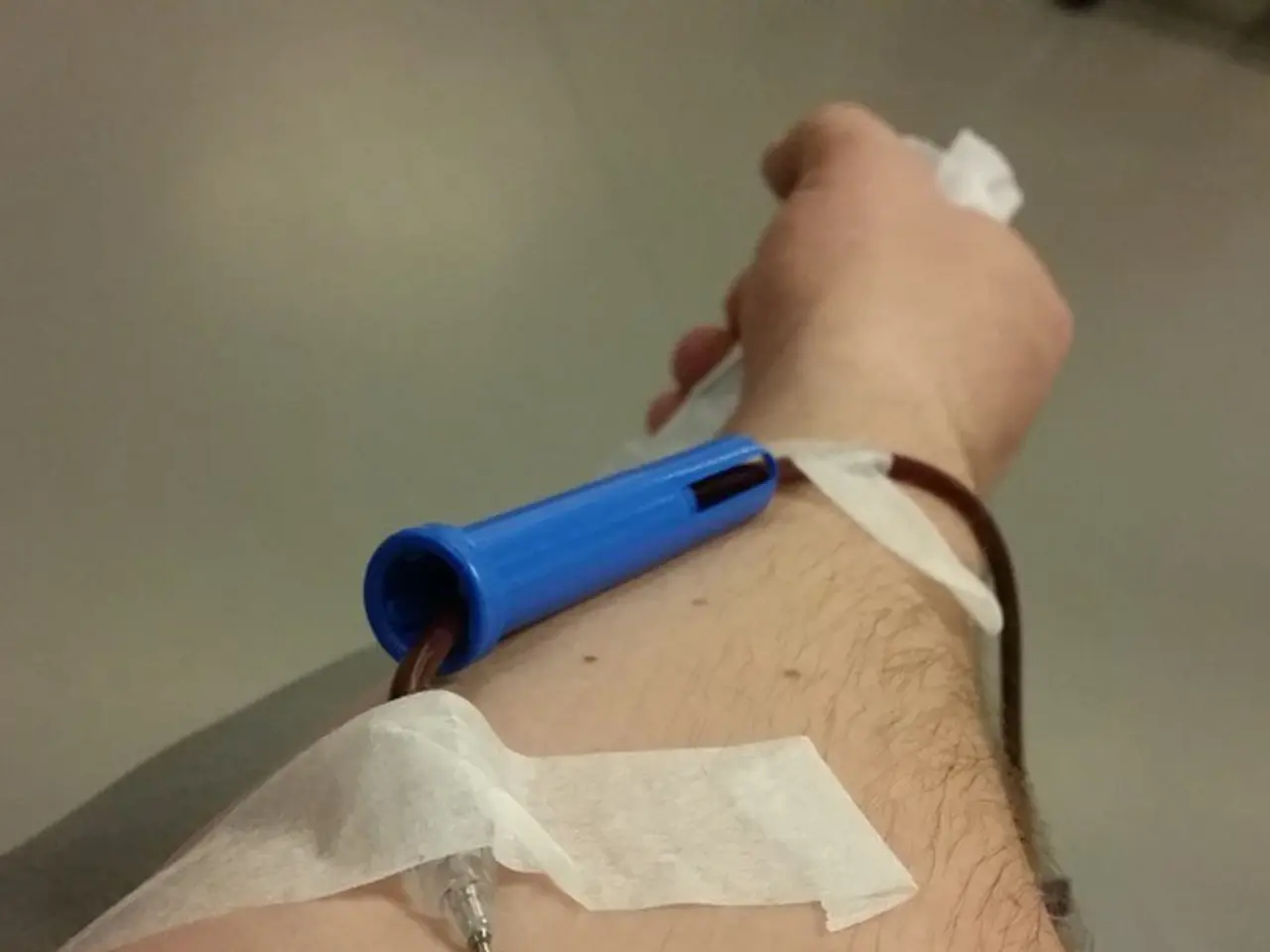Duration and Process of Blood Donation: A Detail on Timeframes and Steps
In the realm of blood donation, a process known as apheresis has emerged as a game-changer. This innovative technique allows for the targeted collection of specific blood components, maximizing the benefits of each donation session.
At the heart of apheresis is the filtering out of specific components such as platelets, plasma, red blood cells, certain leukocytes, and more. This method is crucial for treating patients with a wide range of conditions, including cancer, trauma, immune deficiencies, and more.
The process begins with a quick check-in, followed by a series of routine health screenings. Donors are asked to provide their name, address, and verified identification, such as a donor card or driver's license. It is also essential that donors are at least 16 years old, in good health, and weigh at least 110 pounds.
Once cleared, the donation process itself commences. For a whole blood donation, the blood drawing takes approximately 10 minutes to draw a pint. However, the total time spent at the centre may extend to around 1 to 2 hours, including check-in, screening, and refreshments.
Apheresis donations, on the other hand, tend to last a bit longer. The approximate donation times for specific components are as follows:
- Platelets (apheresis) take about 1 hour. These are crucial for cancer patients, trauma victims, and others. - Plasma (plasmapheresis) can take up to 90 minutes. This type of donation allows for more frequent donations, as plasma replenishes quickly within 24–48 hours. - Red blood cells (apheresis) also take approximately 1 hour. This method is efficient for targeted red cell collection, particularly for patients needing red blood cell transfusions.
It is recommended that donors drink at least 16 extra ounces of water on the day of donation to stay hydrated and ensure a smooth donation process. After the donation, a healthy diet is advised to replenish lost iron.
Donors are also asked to sit for 15 minutes to rest during the recovery period. Mild side effects such as dizziness or nausea may occur, but these are usually temporary. In some cases, donors may experience pain, bruising, or bleeding at the needle insertion point after apheresis.
It is essential to note that there are certain eligibility criteria for blood donation. Pregnant women, people living with sickle cell disease, and people living with HIV are not eligible to donate blood. Additionally, donors must wait a minimum of 56 days between whole blood donations.
Blood donation can occur at various locations, including blood donation centres, mobile blood drives, or blood banks. It is advisable to bring identification, comfortable clothing, drinks and snacks, and a book for longer procedures via apheresis.
In conclusion, apheresis donation offers a targeted and efficient method for providing the specific blood components that patients need. It is a safe, effective, and essential practice for treating a multitude of medical conditions.
Donors who undergo apheresis donation contribute not just whole blood, but targeted components like platelets, plasma, and red blood cells. These specific blood elements are vital for treating a variety of health conditions, such as cancer, trauma, and immunodeficiencies.
With apheresis, donors can make a significant impact on health-and-wellness, as their donations often last longer compared to traditional whole blood donations. For instance, platelet apheresis takes approximately 1 hour, plasma apheresis up to 90 minutes, and red blood cell apheresis also around 1 hour.




